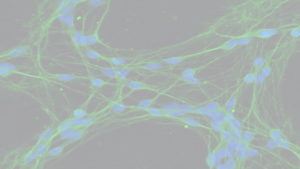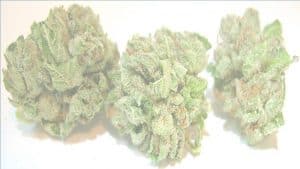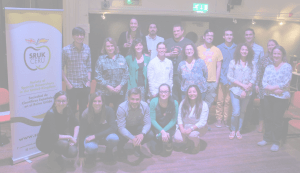Microorganisms are tiny living organisms, invisible to the naked eye, that are essential for life on Earth to happen. They appeared on our planet at least 3.5 billion years ago and, since then, they have evolved to adapt and survive to many different environments. They inhabit deserts, the poles, oceans in all its depths, volcanoes, hydrothermal vents, hot springs and, of course, other living organisms like you or me. If you want to know which microorganisms live in every and each of these places and how humans can benefit from these tiny neighbours, then keep reading.
North and South Poles
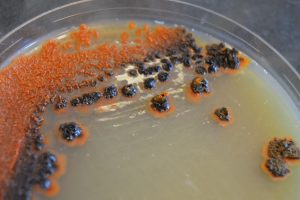
Figure 1. Bacteria producing carotenes (orange pigment).
The poles harbour diverse and active microbial populations. They cover almost all the major known groups of microorganisms. Bacteria living in these habitats play important chemical roles in glaciers, atmospheric clouds and, more largely, in water-based environments of these cold regions. A common characteristic of bacterial strains found at the poles is that they contain pigments that are produced in response to solar radiation and provide protection against it, in a similar way as melanin acts in our skin. For this reason, some Antarctic bacteria are used for the commercial production of β-carotenes. Other polar bacteria are widely used for their capacity to produce antifreeze proteins that could be used to protect organs during freezing before transplantation.
Atacama Desert
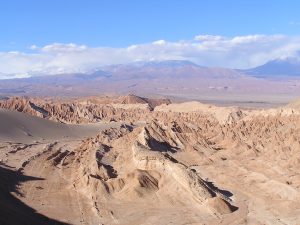
Figure 2. Atacama desert. Photo credit: Ogwen, flickr
The Atacama Desert is the driest and oldest desert on Earth. It is an extreme environment for many reasons, including low water availability, high UV radiation, high salinity, and because of going from very hot to very cold temperatures from day to night. During the past ten years, researchers have found plenty of microorganisms that have been able to adapt and evolve in very specific and unexpected habitats in this desert. Amongst them, we can find Acidithiobacillus ferrooxidans, a very useful bacterium whose ability to oxidize metals has been exploited for years in a process known as biomining. Essentially, these bacteria can attack insoluble sulfide-containing minerals and convert them to soluble metal sulfates. Moreover, A. ferrooxidans provides a clean alternative to traditional purification techniques that produce hazardous by-products.
Hot springs

Figure 3. Yellowstone National Park. Photo credit: Jim Peaco, National Park Service.
Hot springs are characterized by the presence of hot water and steam, and sometimes also low pH and harmful elements such as mercury. Besides, temperatures there can usually reach 100°C and, despite this temperature being quite extreme, we expect to find bacteria in most hot springs. Today, many scientists study the microorganisms that live in Yellowstone’s National Park, as some of these are similar to the first photosynthetic organisms that inhabited our planet. Thanks to this ability, those microorganisms were able to create an atmosphere that would support human life. In hot springs, photosynthetic microorganisms generate oxygen that can then be used by other bacteria. Some of these bacteria can also turn hydrogen or sulphur into molecules that other organisms can use. Even some of them can oxidize arsenic into a less toxic form, which means that they could be used to clean up arsenic from polluted environments.
The deep sea
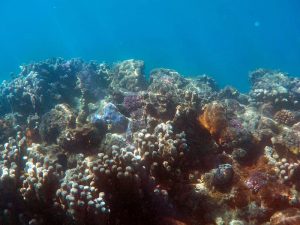
Figure 4. Ocean seabed. Photo credit: Pikrepo.
The deep-sea is characterised by high pressures and cold temperatures, except for the areas around hydrothermal vents, where temperatures can rise up to 400°C. Bacteria from the deep sea are difficult to study because researchers need to artificially recreate in labs the high pressure under which these organisms live. One of the most interesting applications of bacteria from the deep sea is that they are a great source of novel compounds with medical applications such as antibiotics and anticancer compounds. Another interesting fact about these microorganisms is that their proteins are very stable at high pressures and, since these are used for food processing, these proteins could be used to better preserve some food traits such as their flavour or colour.
Our everyday life

Figure 5. Fermented products. Photo credit: Clara Peeters, Wikipedia.
These are just some examples of extreme environments and the type of microorganisms that inhabit them. Nevertheless, we should not forget about more conventional environments. For instance, soils harbour a wide variety of bacteria. These are actively involved in carbon and nitrogen cycles, they can associate with plants to help them obtain nutrients and they can promote plant grown through the production of specific molecules. Besides, they are our life partners. And this is not only because of beer, cheese and yogurt; but also because they help us every day in our guts so that we can absorb the nutrients in the food we eat.
In summary
Now you know that our planet is full of life, even if you can’t see it. Microorganisms are essential in our lives and we can find them everywhere. We have seen that they play essential roles in nature, and evolution has gifted them with superpowers that make them unique. With their special abilities, they have taken care of us for many, many years. They started producing oxygen when the Earth was an inhospitable environment, they maintain terrestrial environments healthy by producing compounds that improve plant growth, some of them can even turn environmental pollutants into non-hazardous by-products, and they are the source of all kinds of drugs. Now, it is time we take care of our planet to maintain all its amazing biodiversity.
* * *
By Alba Iglesias Vilches (@Biotechmind), PhD student at Newcastle University.

